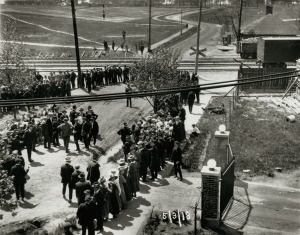

On this day in labor history, the year was 1918.
That was the day workers at Wagner Electric in St. Louis ended their twelve-day walkout, in exchange for promised negotiations regarding union recognition, higher wages and fewer work hours.
Wagner held defense contracts to provide detonators and firing pins for munitions.
With the U.S entrance into World War I, the orders increased, as did the labor shortage.
In this instance, more women entered the workforce.
Wagner was no exception.
During this period, nearly a quarter of the St. Louis factory workers were female.
Yet the unionized industries made no attempt to organize them.
Amid a strike wave that rocked the city, about 1000 men and women struck Wagner on March 6.
They demanded the reinstatement of coworkers who had been fired for attending a Machinist’s Union meeting.
A week later, close to 2700 workers were on strike.
The male workers at Wagner made less than half of their counterparts in the unionized industries, while their women coworkers made half of that!
Workers contended that Wagner violated federal contracts by refusing to honor the eight-hour day and equal pay for equal work.
Historian Rosemary Feurer notes the Ordnance Department reached a tentative deal to get workers back to the job and then spiked negotiations by smearing strikers as unpatriotic.
The company refused to address longstanding grievances.
According to Katharine Corbett, Wagner Electric also “required workers to sign loyalty pledges to the company.”
Over half the workforce would walkout the following month, with the support of Mother Jones.
Workers appealed to a more sympathetic War Labor Board, but found they could not get the agreements they demanded until the years of industrial organizing in the 1930s.
More Episodes
All Episodes>>You may also like
Create Your Podcast In Minutes
- Full-featured podcast site
- Unlimited storage and bandwidth
- Comprehensive podcast stats
- Distribute to Apple Podcasts, Spotify, and more
- Make money with your podcast











